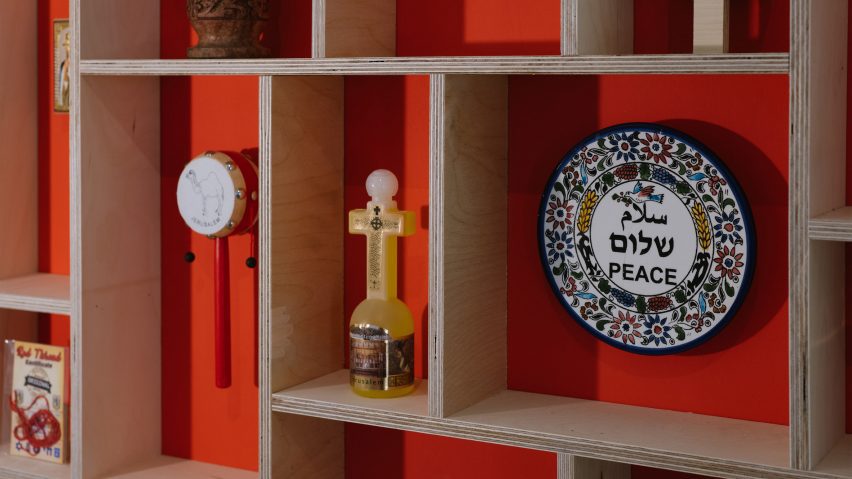
Five key trends from Jerusalem Design Week 2023
Humorous applications of AI and a spotlight on recently graduated and emerging designers were among the key themes that emerged from this year's Jerusalem Design Week.
Approximately 40,000 people attended the 12th edition of Jerusalem Design Week, Israel's largest annual design event, which took place at Hansen House on 22 to 29 June.
This year, 150 exhibitors from Israel and around the world responded to the theme Lies and Falsehoods, covering topics in technology, materials and lighting design.
Here's a breakdown of the most notable trending themes that emerged from the festival:
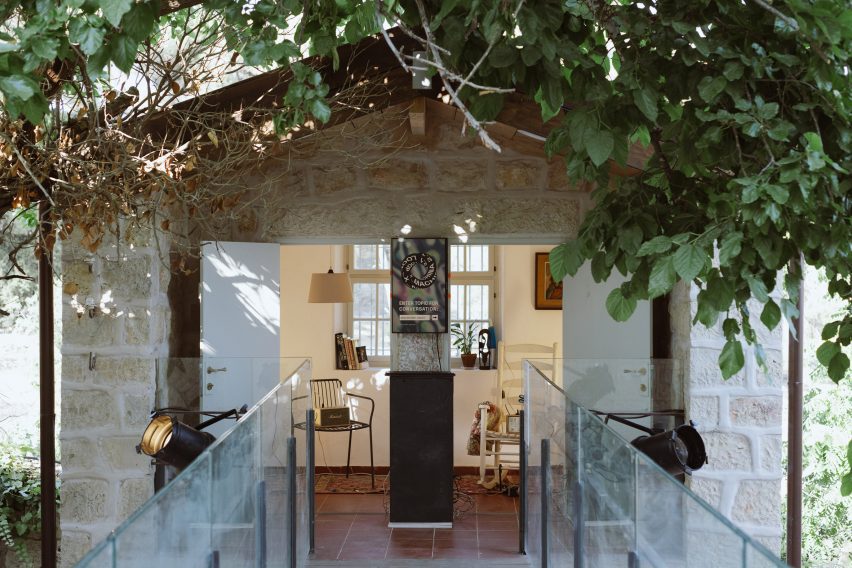
Interactive AI
This year's Jerusalem Design Week was an AI playground with several installations involving light-hearted and comical applications of ChatGPT and DALL-E.
On the upper floor of an outbuilding, two chairs appeared to be in conversation with each other, debating any topic visitors submitted.
Designer Nevo Himmelhoch created a homey set-up for the ChatGPT-generated debates, prompting visitors to question if the conversations played through speakers sound human-like.
In the outdoor space below, the Prediction Addiction installation used AI to read your future by analysing the leftover grounds in coffee cups, and Cheatopedia generated AI portraits and life stories of visitors' parallel lives.
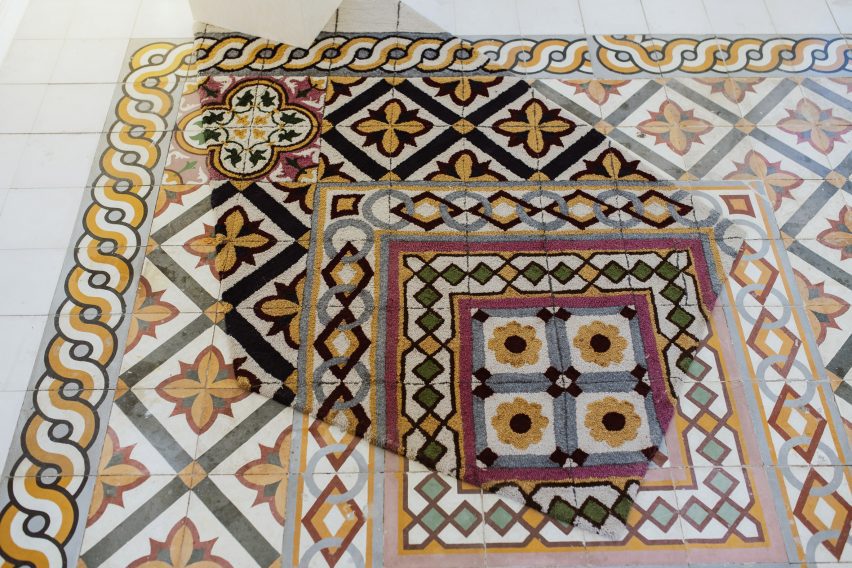
Deceptive materials
Many exhibitors responded to the design week's Lies and Falsehoods theme by creating illusory materials and objects.
Israeli rug design studio Yarnatak created a rug that perfectly mimics the tiled floor of the exhibition space and shaped it to look like the shadow of a box.
Architecture researchers from the Technion Israel Institute of Technology exhibited a "wood textile" made from recycled sawdust that was 3D-printed to look like rattan, while designer Ibraheem Rajabi presented fragile fibreglass sculptures that looked deceptively like delicately draped fabric.
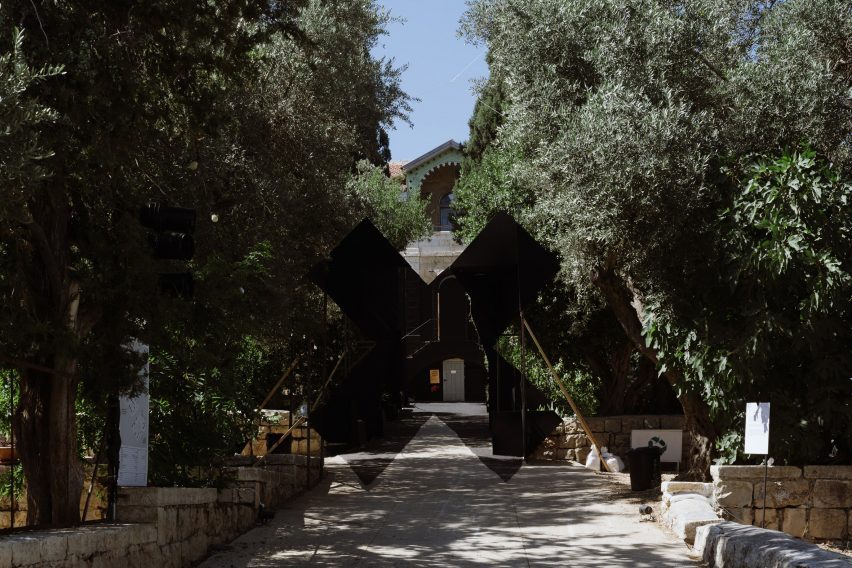
It's all about perspective
Visitors were greeted at the design week venue Hansen House by Blackout Protocol, an installation by Tel Aviv-based architecture studio HQ Architects that challenged perspective and encouraged visitors to engage in the project from different viewpoints.
The studio covered parts of the 19th-century building with abstract black shapes and added three-dimensional black forms along the entrance path, which formed a large X when viewed from the right angle.
Berlin-based designer Esmée Willemsen also prompted visitors to interact with her installation Agency for Unseen Sights from different perspectives, showcasing a series of playground-like structures designed to be climbed to reveal a framed view.
Elsewhere, industrial design students from Jerusalem's Hadassah Academic College exhibited wheat crops behind a frosted screen that could only be seen when a specially-made clear sticker was applied.
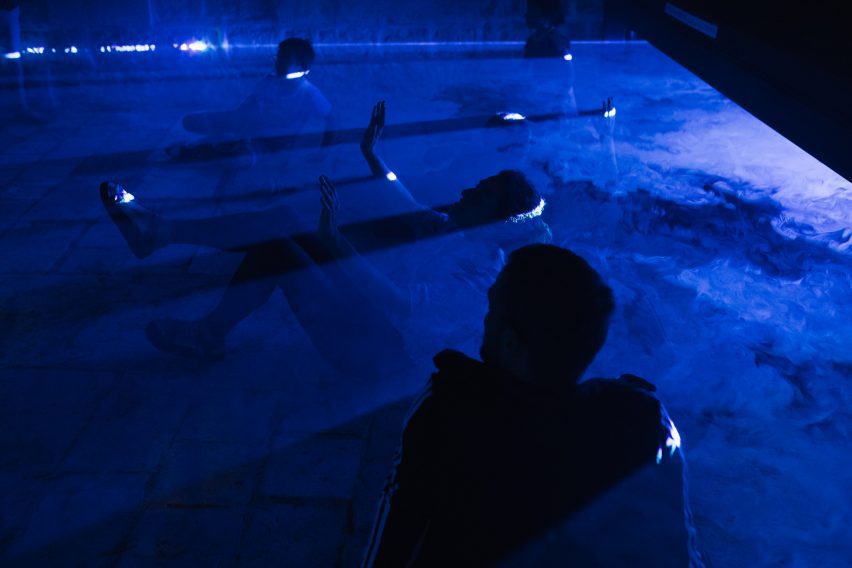
Multi-sensory experiences
Lighting and sound also played a large role in many of the exhibitor's designs this year, according to Jerusalem Design Week curators Dana Ben Shalom and Sonja Olitsky.
"Sound is something that is escorting us through all the exhibitions, which is not something we curated top-down but something that came from the exhibitors – the need for all senses to be involved," Shalom told Dezeen.
"Light and sound are materials," added Olitsky. "Today we have more technology and tools that allow us to make them a part of the design assemblage of materials."
Projects that centred around light and sound included a foggy courtyard with lighting angled to appear as if submerging visitors and a series of LED panels and mirrors creating a seemingly never-ending light horizon.
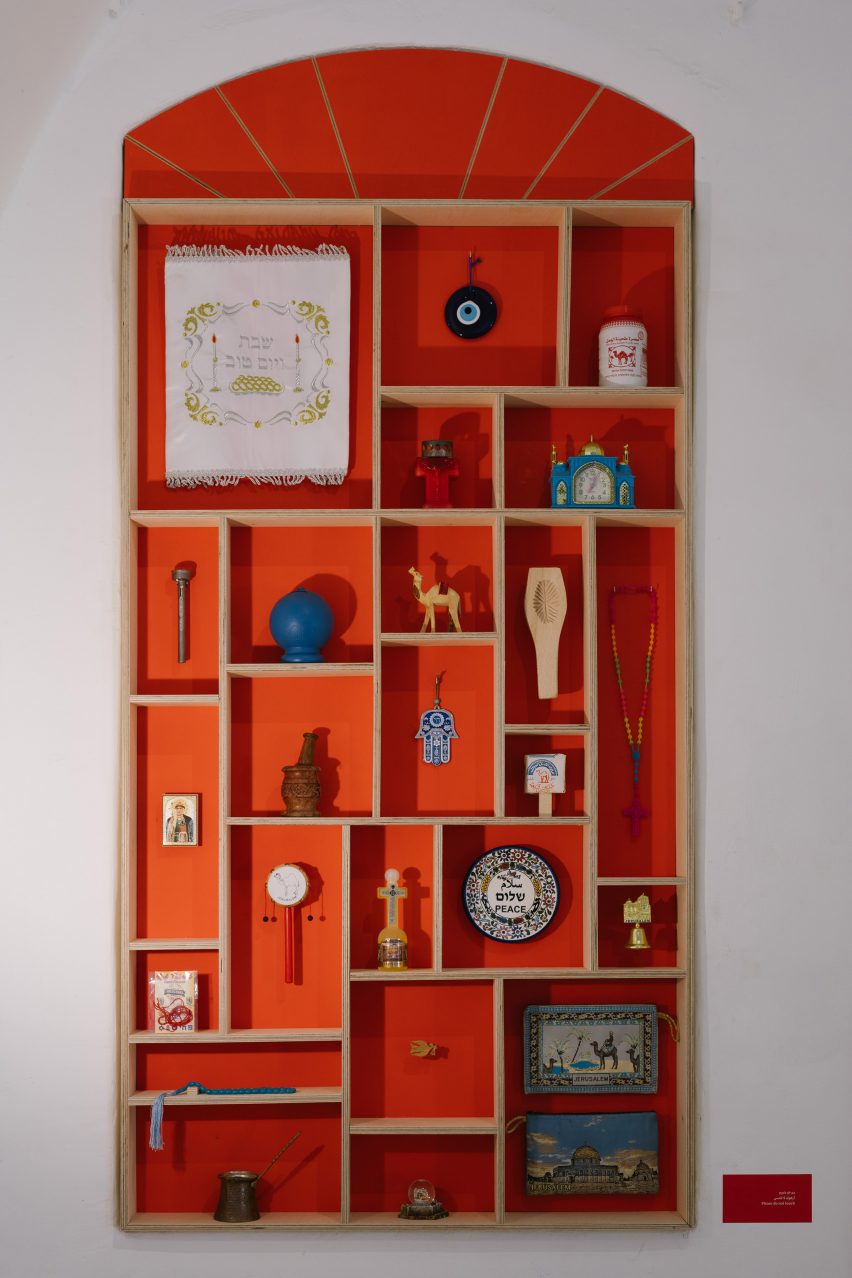
Emerging local talents
Jerusalem Design Week was also a stage for emerging designers, particularly those that studied in Jerusalem.
Compared with European design weeks, big-name design brands were absent and a large number of recent graduates displayed their university projects instead – a conscious effort from the design week curators.
"[Jerusalem Design Week] is a festival of design that brings together students from several institutes in one place to exhibit their works together on the same level, because the opportunity is equal here," explained Olitsky.
The festival's Matchmaker project returned this year, which paired local designers with storytellers and tour guides to create souvenirs that reflect the history of specific buildings in the city.
The photography is by Dor Kedmi.
Jerusalem Design Week took place from 22 to 29 June 2023 at Hansen House, Gdalyahu Alon Street 14, Jerusalem, Israel. See Dezeen Events Guide for an up-to-date list of architecture and design events taking place around the world.